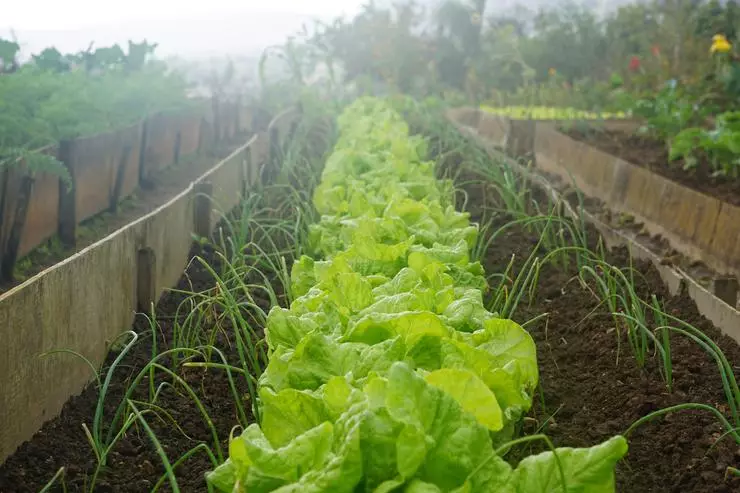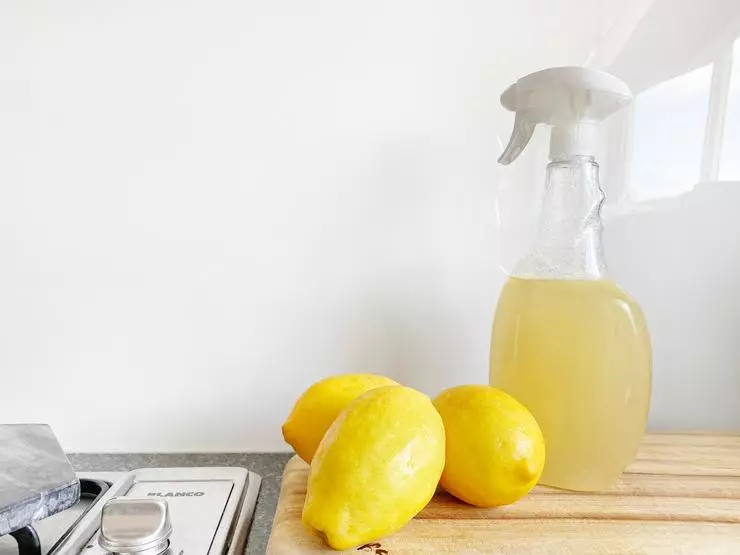Do you know that the United States is the world leader in the production of food waste? According to RTS, the average American family of four is thrown out products worth about $ 1,600 per year. And these are just nutritional waste - according to EPA, in 2017, plastic waste in the United States was 35.4 million tons, that is, approximately 234 pounds of plastic waste per person per year. Russia is not far away: we still have fruits and vegetables wrapped in plastic, and you can buy in single stores in our container due to sanitary standards. So how can we cope with this?
Of course, households are not the only perpetrators of the problem - restaurants and commercial enterprises also make a major contribution - but make changes at home - this is an easy way to start. The change in some home habits will not only help the environment, but ultimately save money to you. Start with cutting waste in the kitchen with these simple steps:
Grow vegetables anew
The next time you think about disposal of vegetable waste, think again: most fruits and vegetables can be grown again. It is easier than you think, and you will save money on the score for the products. Engage the family and turn it into an educational experience or a cheerful experiment. All you need is trimming a different size, bowls, banks and pots. Although not all waste can be raised again - if it is impossible, compost them! - But there are several main vegetables that can be grown at home:

Greens can be grown re
Photo: unsplash.com.
Green onions. This is one of the most simple vegetables for growing. Cut 2 cm from the root and put it vertically into a glass with water. Be sure to leave it in place with sufficient sunlight. Change the water once a week until green sprouts appear. Transfer to the soil when shoots reach 8 cm long. Now you have an endless reserve of onion, which can be used as a side dish or in soups. The same method can be used for onion.
Celery. Another vegetable that is easy to grow. Simply cut 4 cm from Celery beam root and place it in a shallow glass bowl with a sufficient amount of water to immerse the root for 2 cm. Then watch how it grows, after two or three days there will be small leaves, and then stems. Transfer to the soil as soon as it starts brown.
Get rid of plastic containers
Most plastic containers are subject to recycling, but alternative to product storage are silicone food containers. Unlike rigid plastic, silicone does not crack, does not dry and does not rot over time, which means that you do not have to change it so often. In addition, it is lightweight, saves a place and made from rich natural resources. There is no need to rummage in the lids, the containers are closed on zipper, which makes them a steady alternative plastic. In addition, it is lightweight, ideal for lunch, snacks and many other things.
Try a reusable packaging
Food film, polyethylene film - no matter how none called it, it is a disposable plastic, harmful to the environment. Instead, try a cotton film, covered by beeswax, jojoba oil or a resin trees. Package dinners, store products and turn off the remnants of a multi-precision film that you can also wash. Beautiful prints are an extra bonus.
Scroll to secure cleaning products.
Most domestic cleaning products contain chemicals, some of which are harmful to humans and the environment. They can also be expensive. Instead of reaching a bottle on the shelf, make your own "green" cleaning agent of several household products. To get a universal cleaning agent, simply mix two cups of white vinegar with two cups of water and keep it in the spray gun until next time. You can also add a few drops of essential oils for fragrance. It is also perfect as a stain remover for carpets.

Natural tools are better than chemistry
Photo: unsplash.com.
Get rid of microplasty
Do you know that every time you rinse and press the sponge for the dishes, do you extrify the harmful particles of microplasty to the ocean? Choose a kitchen towel or sponge of processed materials, such as paper and agawa, or a natural sea sponge. They are still reusable, but without harmful microplastics. There are also organic lufa and sponges on a vegetable basis.
